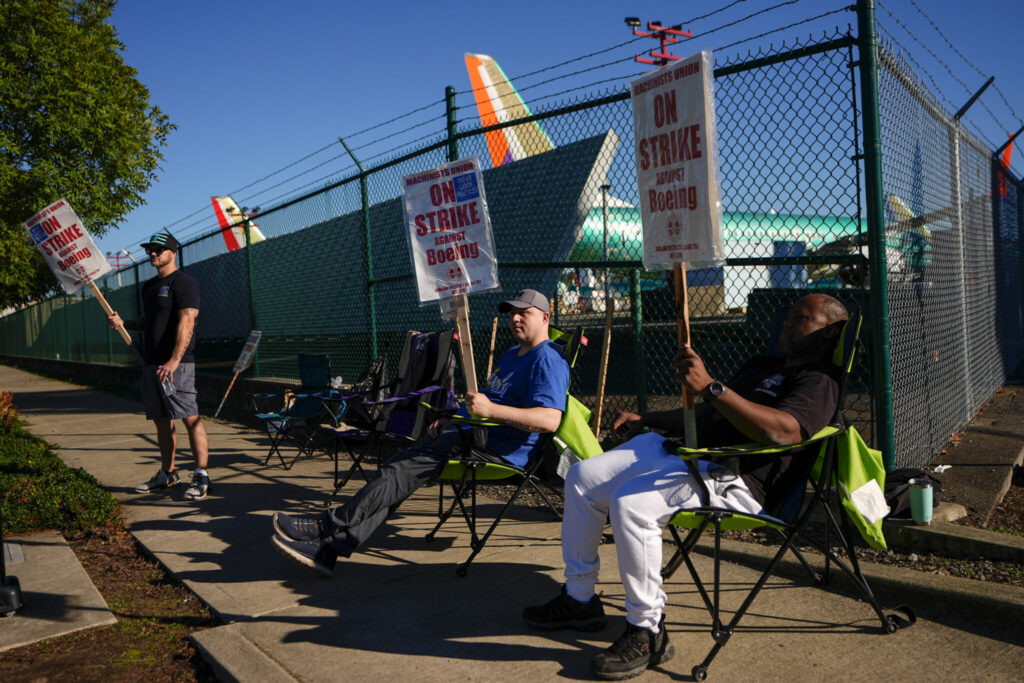U.S. October jobs report/ October job growth slowdown/ U.S. labor market update/ hurricanes strikes job impact/ unemployment rate stable/ Newslooks/ WASHINGTON/ J. Mansour/ Morning Edition/ U.S. employers added just 12,000 jobs in October as hurricanes and labor strikes disrupted payrolls. Despite a steady 4.1% unemployment rate, signs of a labor market slowdown reflect broader economic challenges as inflation and high costs remain central issues for voters.

October Jobs Report: Quick Looks
- Job Growth: Only 12,000 jobs added in October, down from 223,000 in September.
- Causes: Strikes (notably at Boeing) and Hurricanes Helene and Milton significantly impacted payrolls.
- Unemployment: Held steady at 4.1%, indicating underlying labor market resilience.
- Economic Context: Despite high inflation, the economy grew at 2.8% last quarter, led by consumer spending.
- Fed Outlook: Fed expected to reduce interest rates next week as inflation eases.
- Labor Market Trends: Declining job openings and fewer worker resignations suggest waning job mobility.
U.S. Job Growth Slows Sharply in October Amid Strikes and Hurricanes
Deep Look
U.S. job growth slowed dramatically in October as hurricanes and widespread labor strikes impacted the workforce, leading employers to add just 12,000 jobs. The month’s modest hiring numbers reflect the temporary effects of two major hurricanes, Helene and Milton, which affected several states, as well as ongoing strikes, including a high-profile labor action at Boeing. Economists estimate these disruptions caused tens of thousands of job losses or temporary payroll reductions, complicating the outlook for the labor market as the U.S. heads into a high-stakes presidential election.
Compared to September’s 223,000 new jobs, October’s report marks a stark decline, though the unemployment rate remained steady at 4.1%. This consistency suggests that, despite October’s setbacks, the labor market has retained some underlying strength. Additionally, recent reductions in inflation from 2022 highs have brought the U.S. economy to a more stable footing, lending optimism as Election Day nears. With the economy’s current growth rate at a healthy 2.8%, consumer spending has continued to support overall growth, reinforcing the U.S. economy’s position as one of the most resilient among advanced nations despite pressures from high interest rates.
However, Americans’ economic concerns continue to shape the political landscape as they weigh choices between Vice President Kamala Harris and former President Donald Trump. Although inflation has subsided from its peak, overall prices remain about 20% higher than before the pandemic, leaving many households grappling with high costs for essentials. While inflation-related pressures have eased, surveys reveal that voters remain discontented with high prices and the lingering effects of inflation on everyday expenses.
Looking ahead, the Federal Reserve is expected to further reduce interest rates next week, following its previous cuts in response to easing inflation. After a series of 11 rate hikes across 2022 and 2023, the Fed has successfully lowered inflation without triggering a recession. This anticipated round of rate reductions could eventually lower borrowing costs for both consumers and businesses, potentially aiding economic recovery and fostering more affordable credit options in the near future.
The job market is also showing other signs of slowing. Recently, the Labor Department reported that job openings declined to 7.4 million in September, the lowest number of available positions since early 2021. This marks a considerable decrease from the heightened demand that characterized the labor market during the pandemic recovery period. Additionally, the number of Americans voluntarily leaving their jobs fell to 3.1 million in September, the lowest quit rate in over four years. A reduced rate of resignations typically indicates that workers are less confident in their ability to secure better opportunities, highlighting a cooling in job mobility.
Economists note that while the job market remains healthy by historical standards, the diminished number of job openings and reduced voluntary quits signal a shift in workers’ confidence and hint at a more cautious outlook among employers. With the current labor market tightening and inflation stabilizing, the Fed’s rate reductions could play a crucial role in maintaining economic momentum as 2024 draws to a close.







